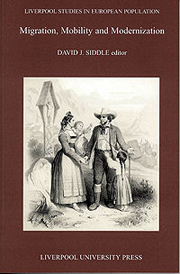
-
The digital format of this book is currently unavailable for purchase. Other formats may be available.
-
Select format
-
- Publisher:
- Liverpool University Press
- Publication date:
- Invalid date
- January 2000
- ISBN:
- 9780853238836
- Dimensions:
- Weight & Pages:
- 00kg,
- Dimensions:
- Weight & Pages:
- Subjects:
- Demography, Social Statistics, Sociology
You may already have access via personal or institutional login- Subjects:
- Demography, Social Statistics, Sociology
Book description
For almost a hundred years the academic study of migration concentrated on evolving standardised models of migration behaviour based on data from censuses or the registration of births, marriages and deaths. More recently, it has been realised that such models fail to take into account the decision-making behind migration and that better understanding will come from study of the behaviour of individuals as well as aggregate numbers. In this book the imaginative use of alternative sources for example, apprentice books, guild and craft records, legal and court documents, diaries and biographies gives fresh insights into the processes of movement to reveal much more complex circulatory behaviour than the standard models derived from census and registration sources alone have suggested. The first chapter confronts the issue of rural mobility in post-famine Ireland and is followed by a study centred on Alpine rural families which built impressive networks across pre-industrial Western Europe. Two chapters focus on the particular characteristics of worker groups: mining families of south Lancashire during the period of rapid increase in coal production in the eighteenth century; and the organised mobility of skilled labour in nineteenth-century central Europe. Next, an imaginative and rigorous deployment of the techniques of family reconstruction and record linkage embracing a variety of sources (vital event registers, wills, port books, apprentice records) teases out the migration histories of those who settled in eighteenth-century Liverpool. There are two chapters on female migrant behaviour, drawing attention in the case of eighteenth-century Rheims to the opportunities and restrictions on the life of migrant women at different points in their lifecycles; and showing how poor women struggled to survive in nineteenth-century Dublin. The final chapter uses family histories assembled by numerous genealogists and family historians to challenge the orthodox view of direct stepwise migration from a smaller to a larger town in the urban hierarchy.
Contents
Metrics
Full text views
Full text views help Loading metrics...
Loading metrics...
* Views captured on Cambridge Core between #date#. This data will be updated every 24 hours.
Usage data cannot currently be displayed.
Accessibility standard: Unknown
Why this information is here
This section outlines the accessibility features of this content - including support for screen readers, full keyboard navigation and high-contrast display options. This may not be relevant for you.
Accessibility Information
Accessibility compliance for the PDF of this book is currently unknown and may be updated in the future.


